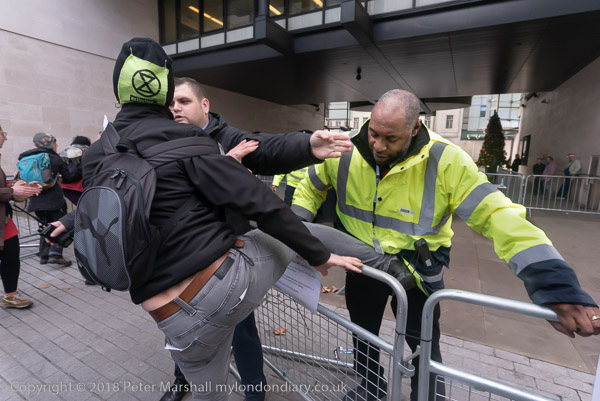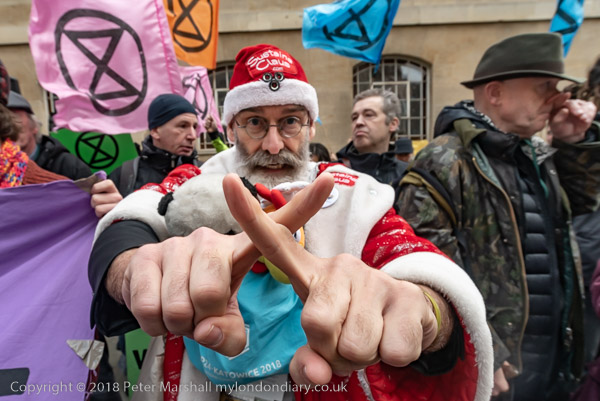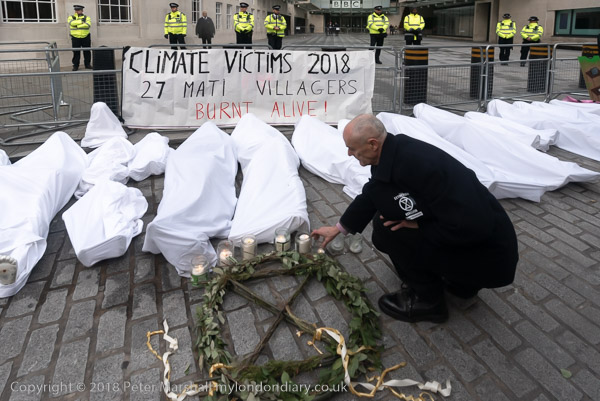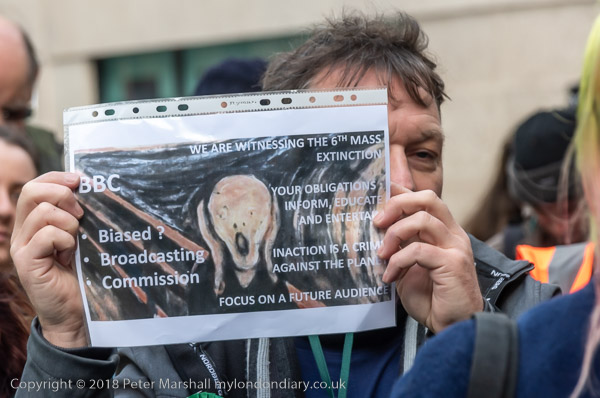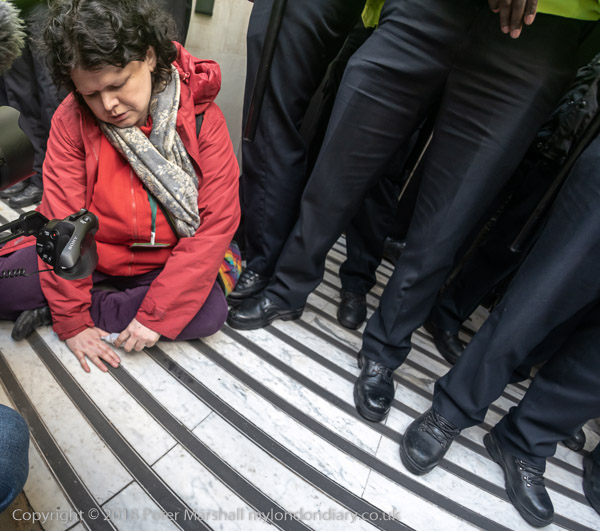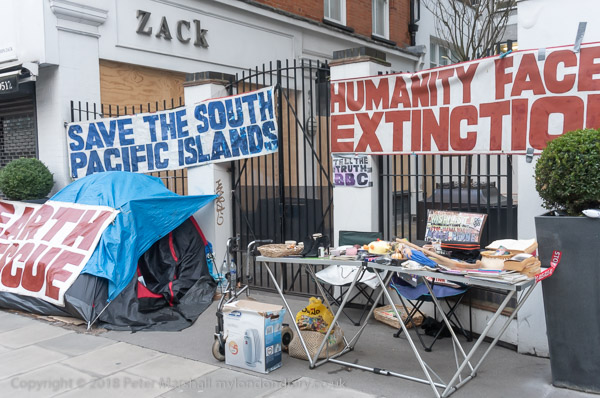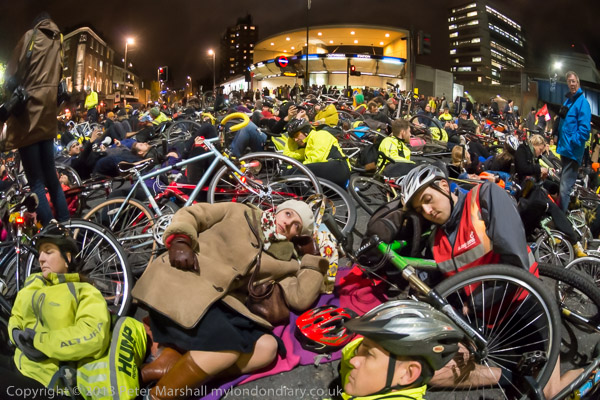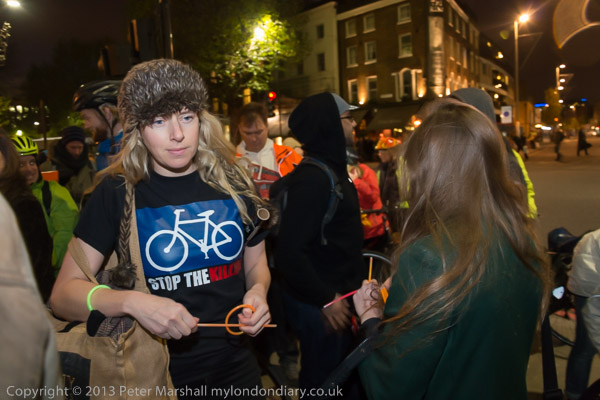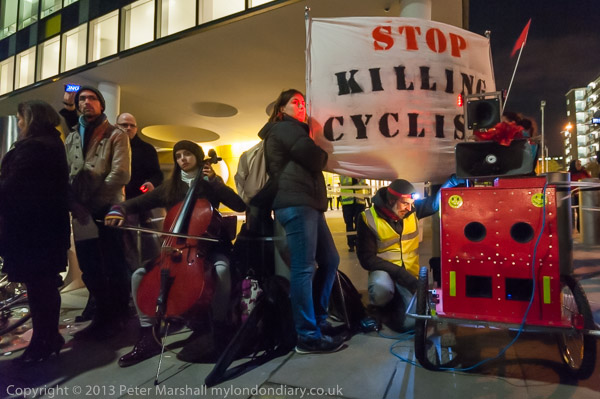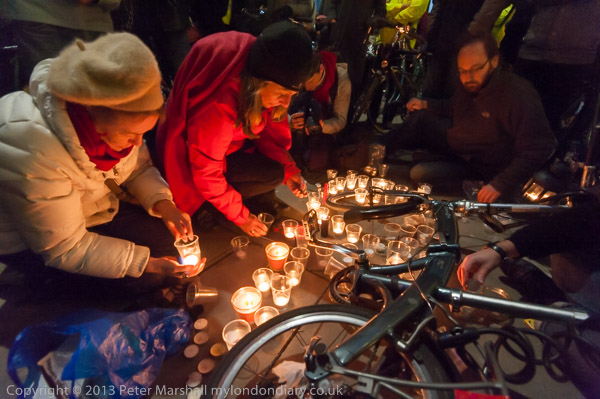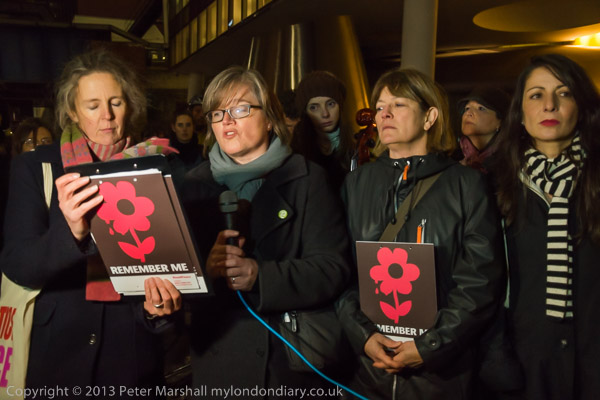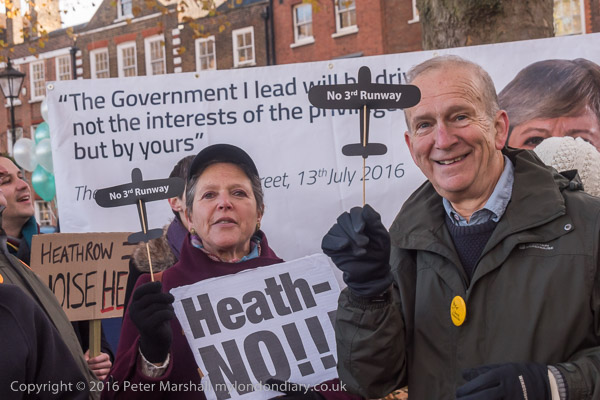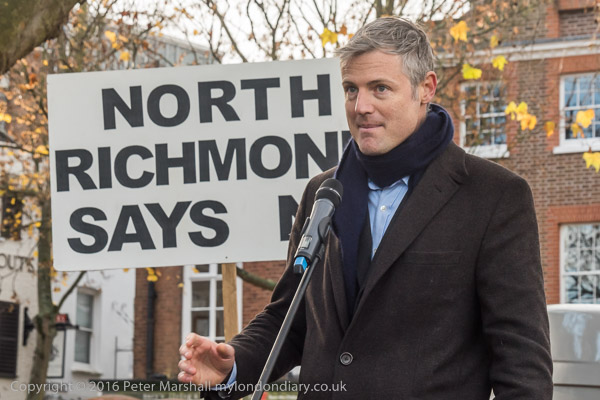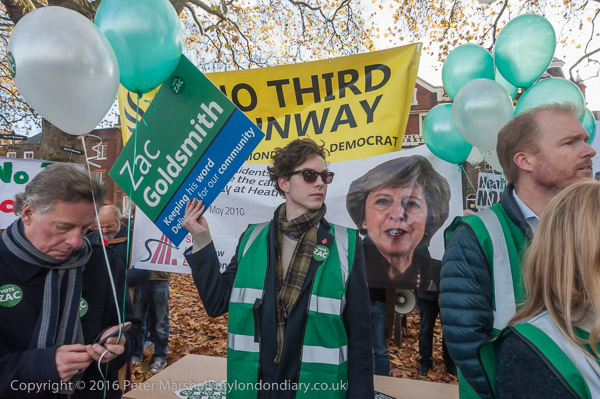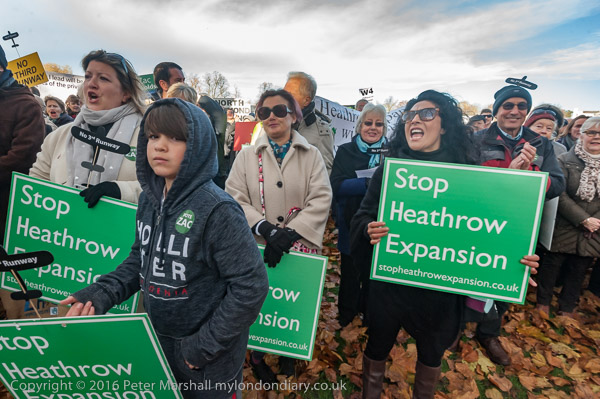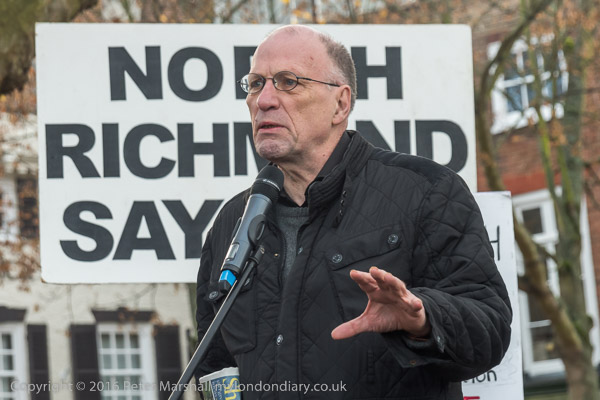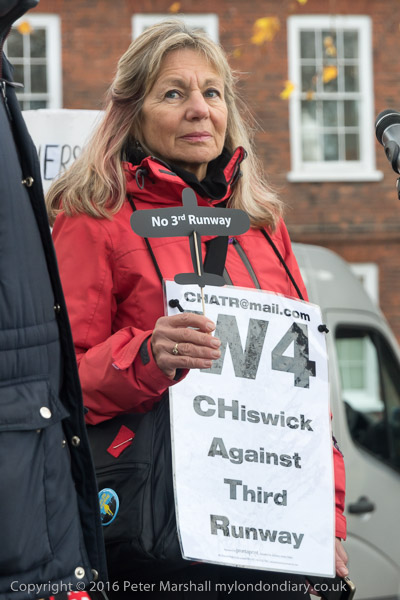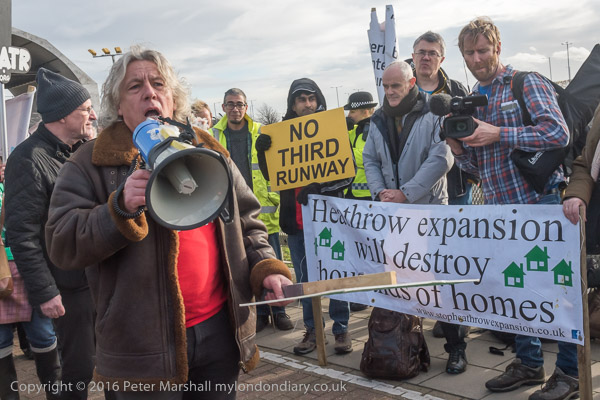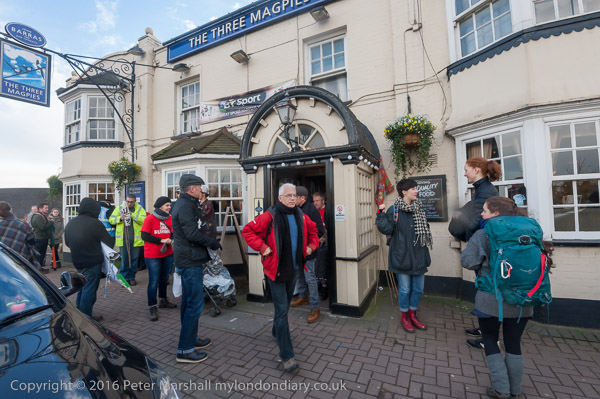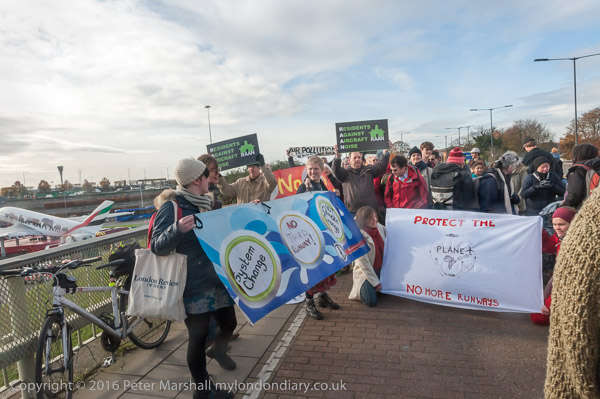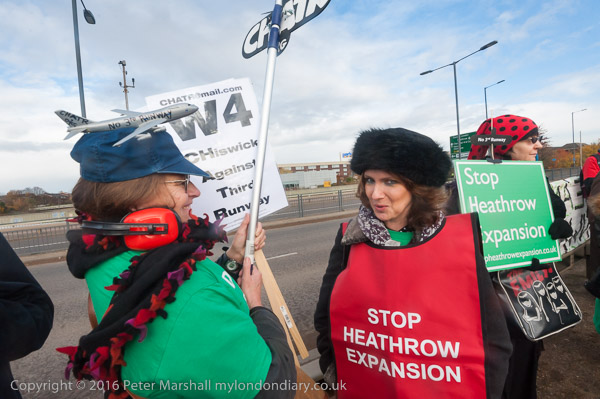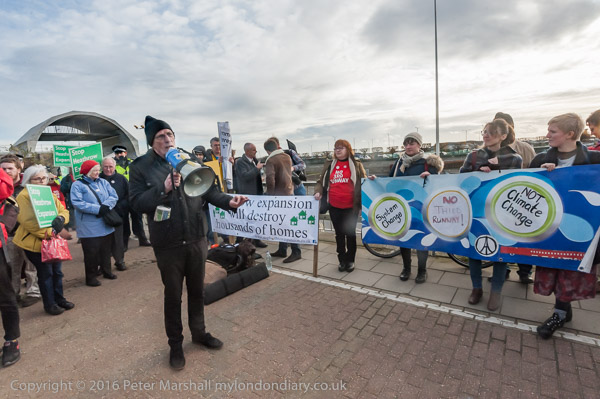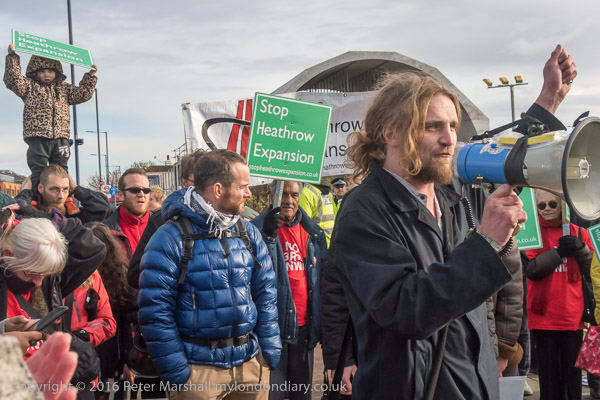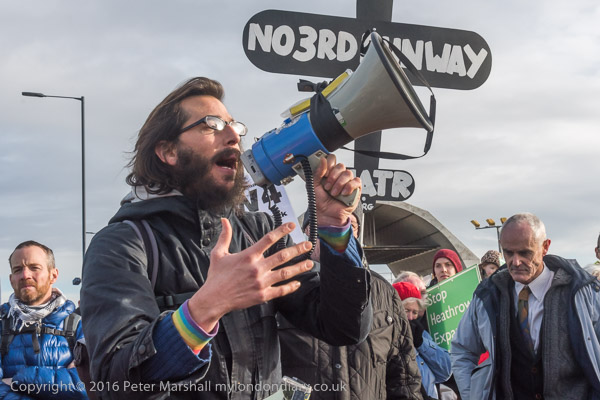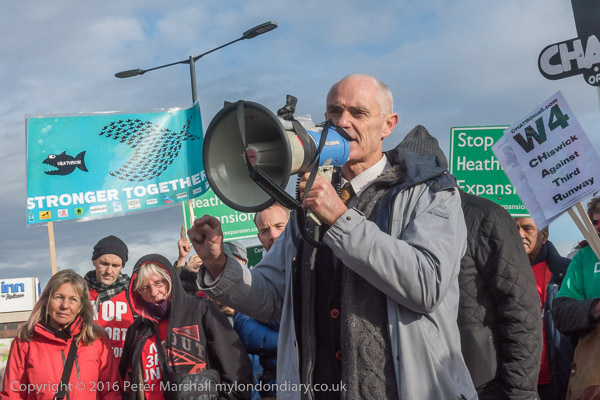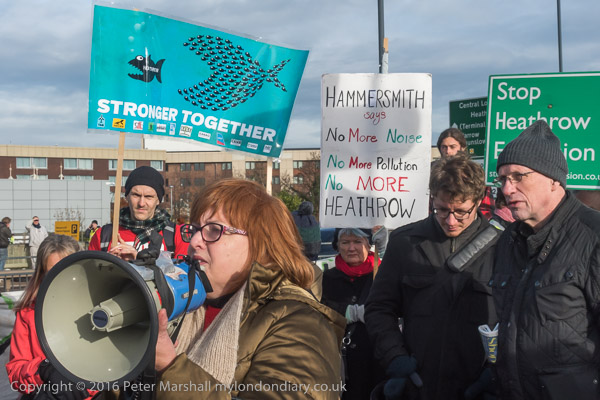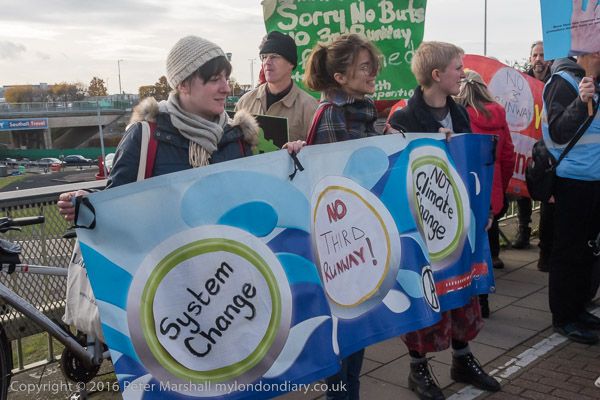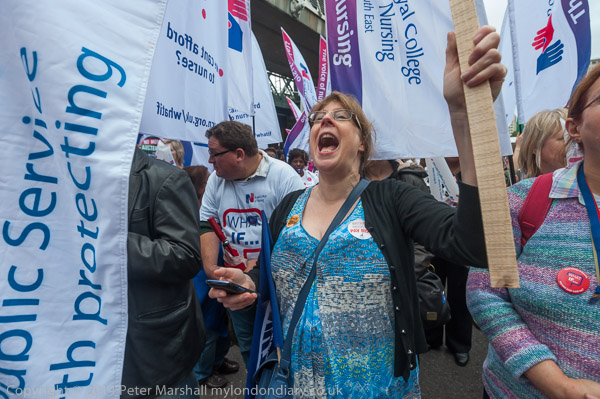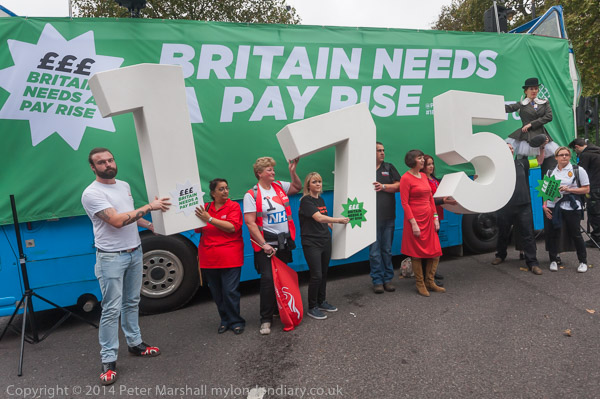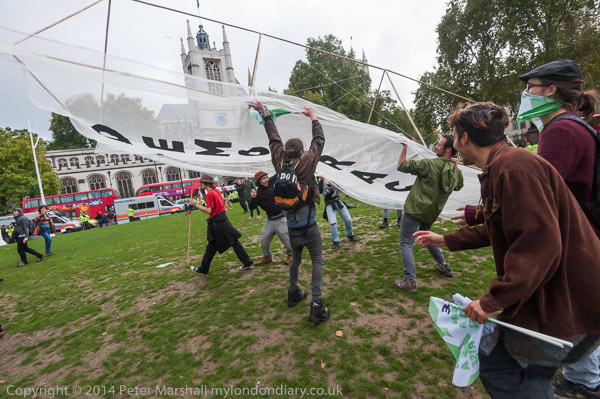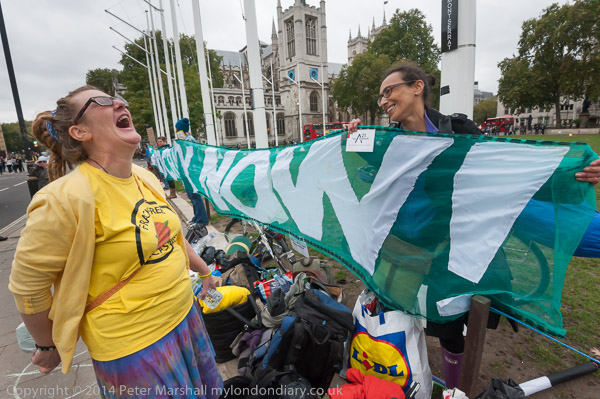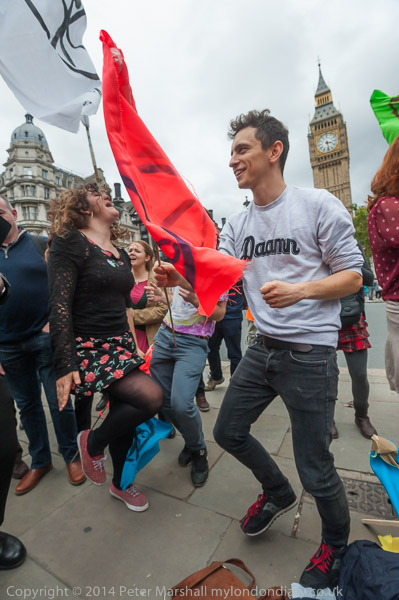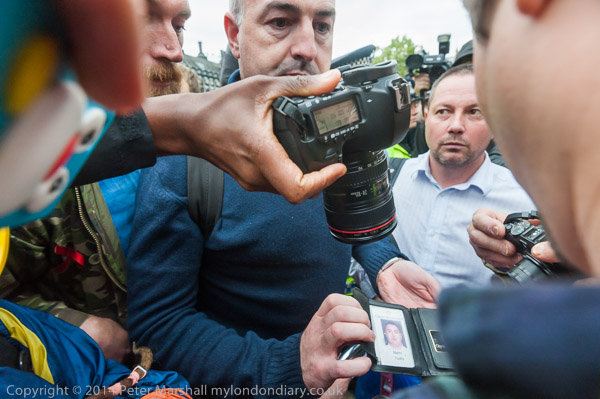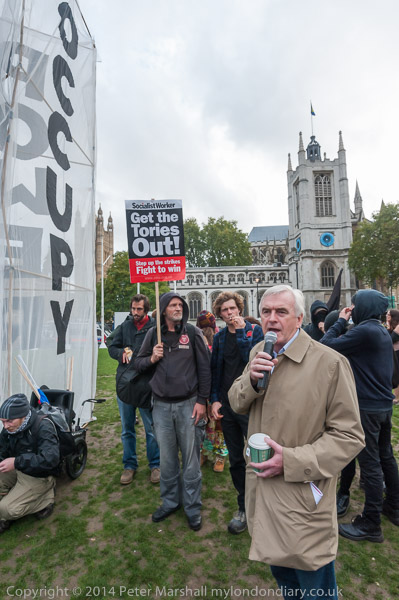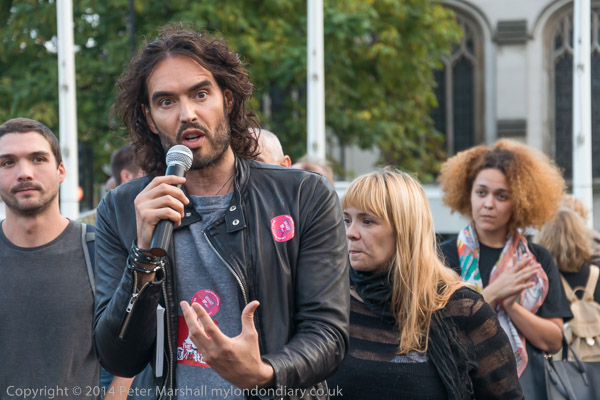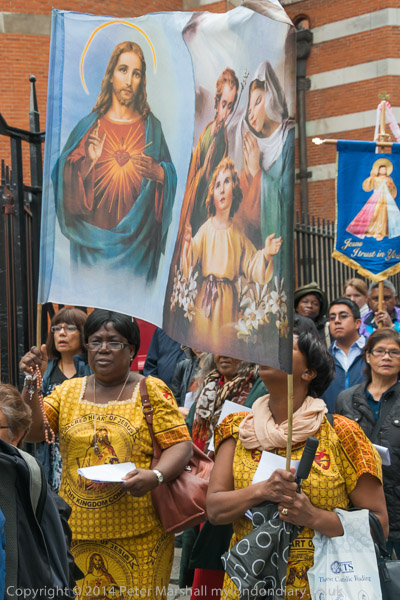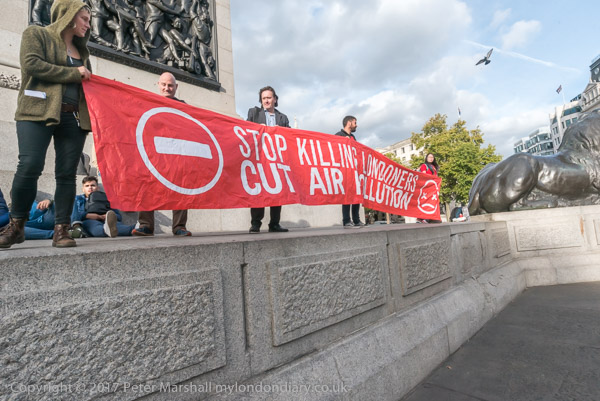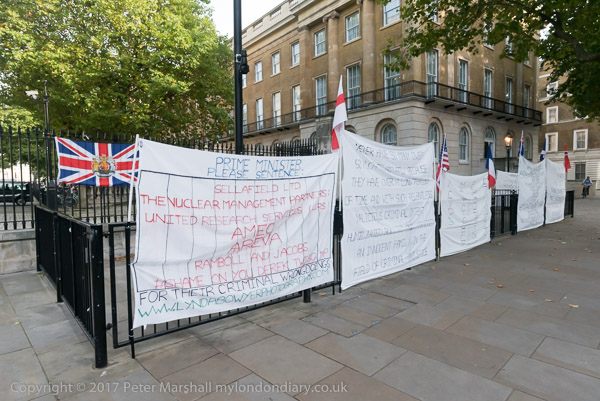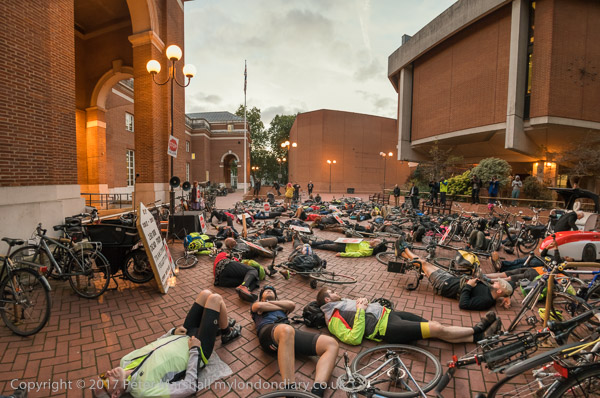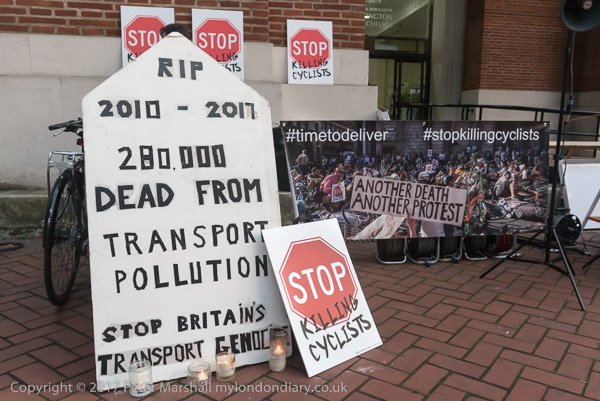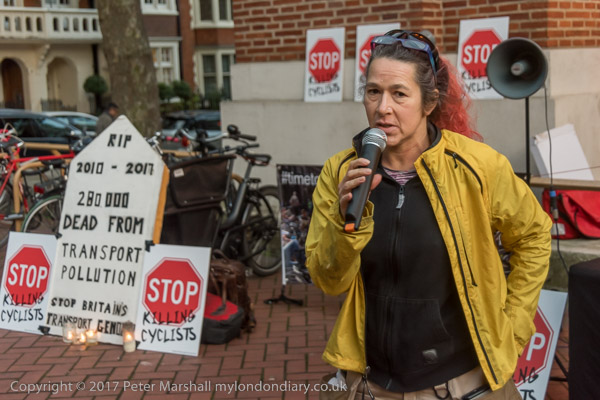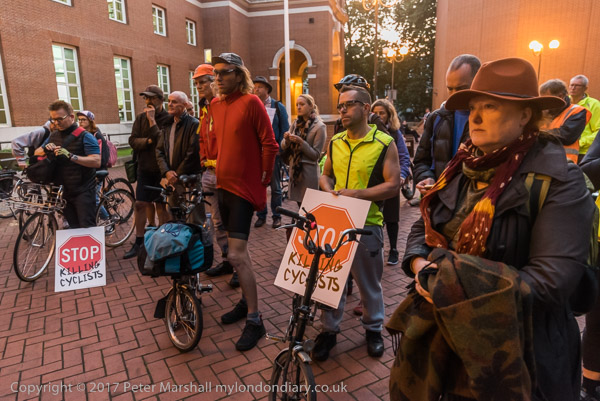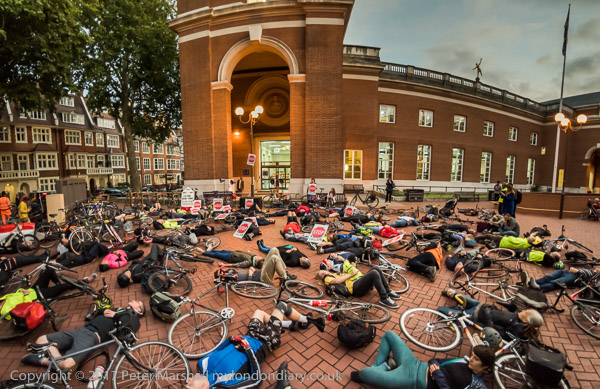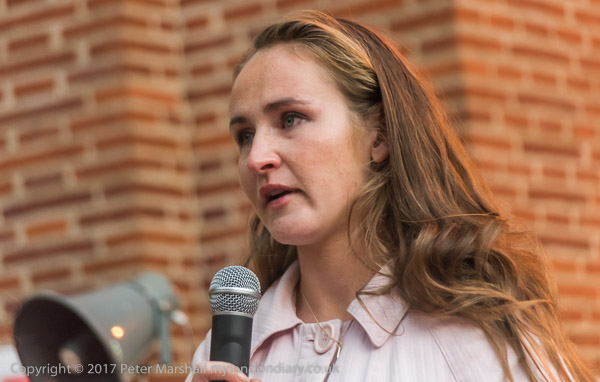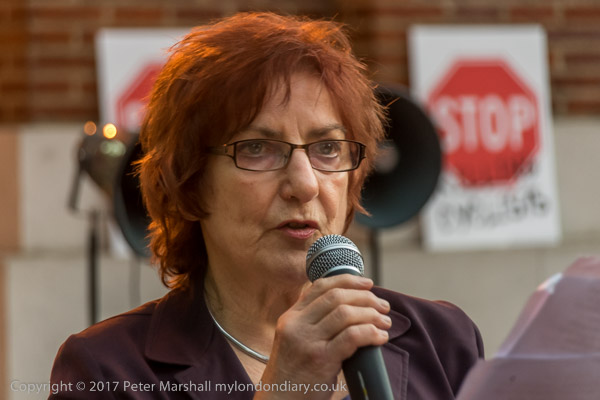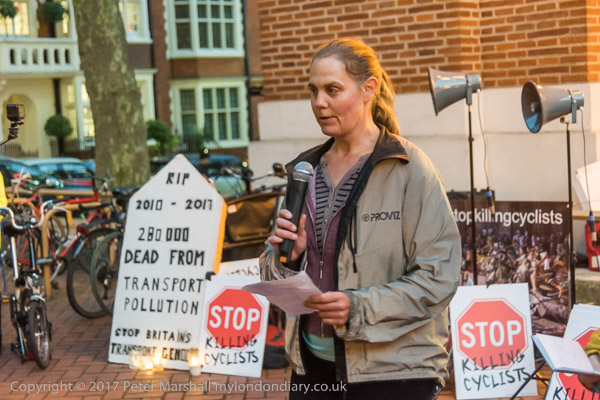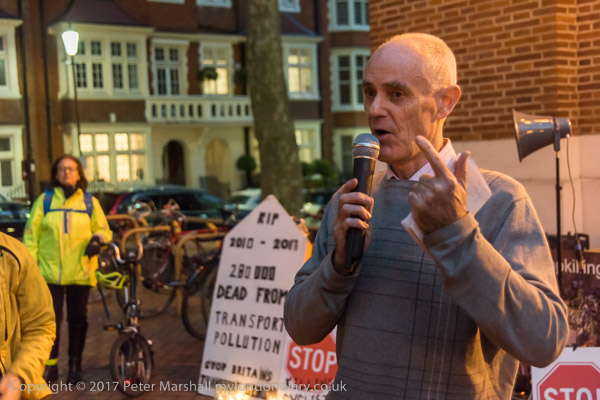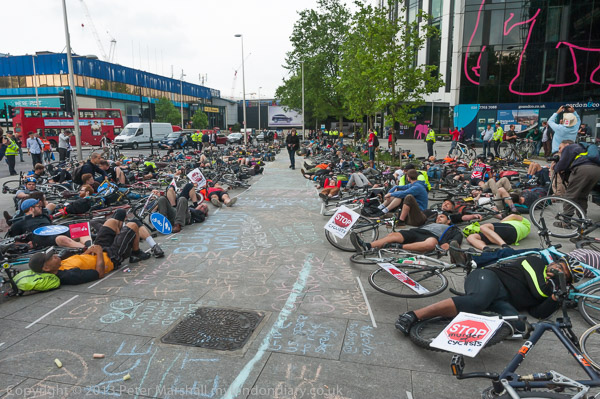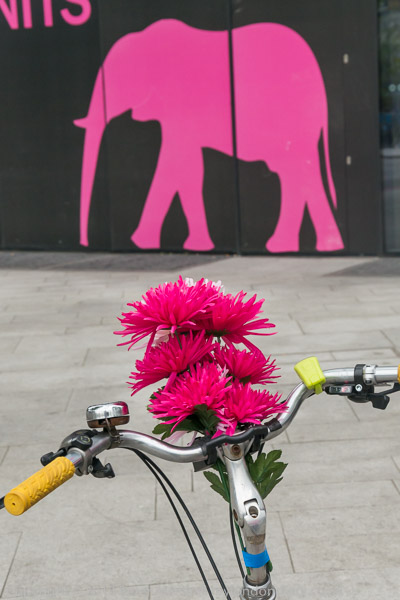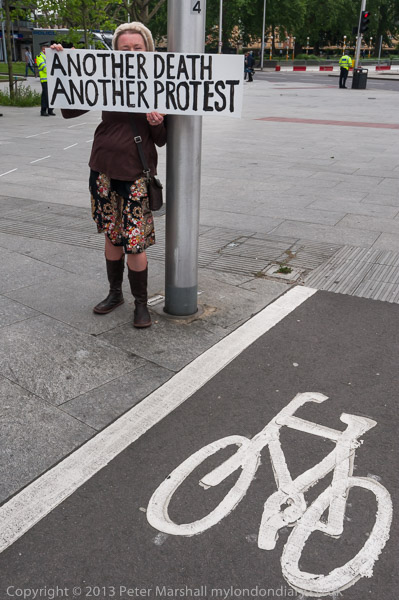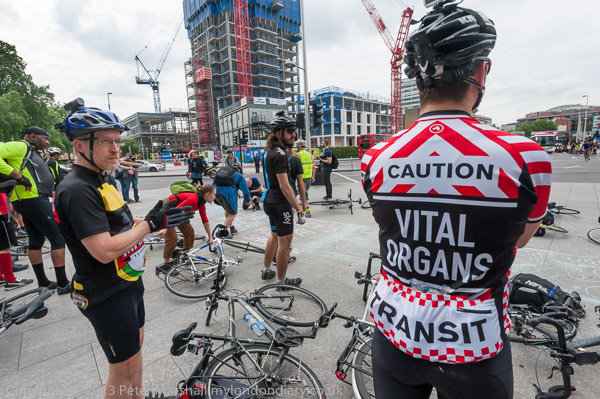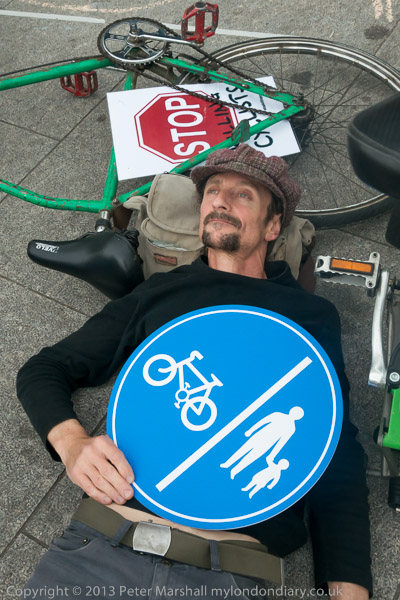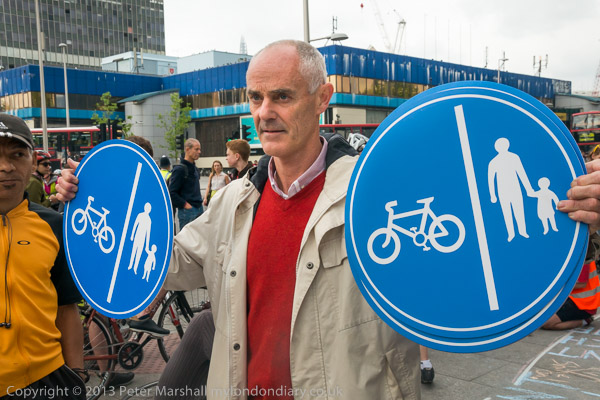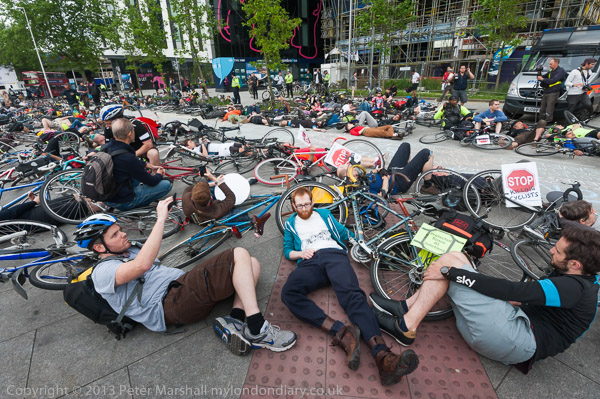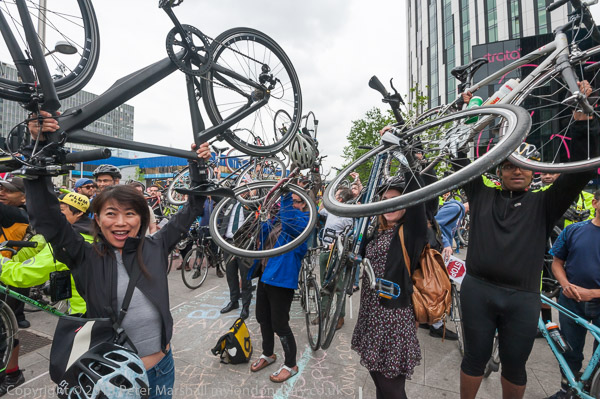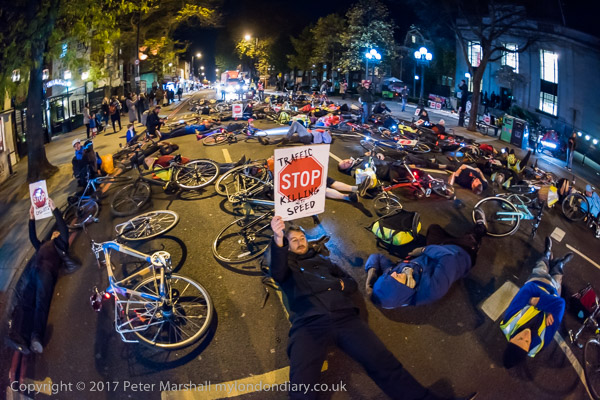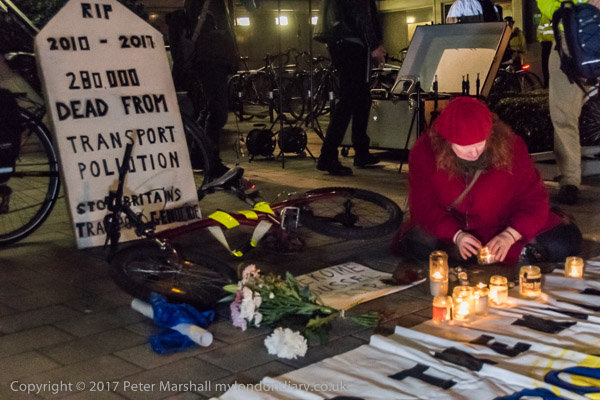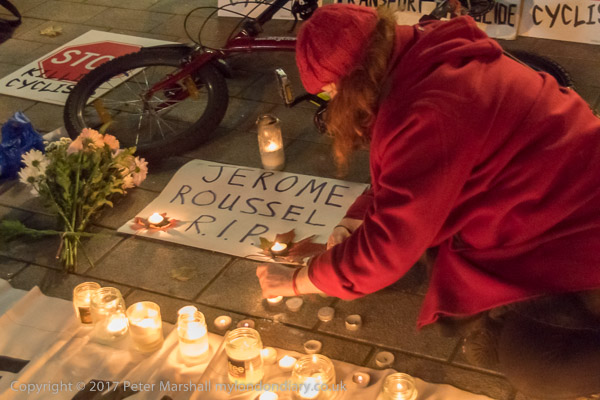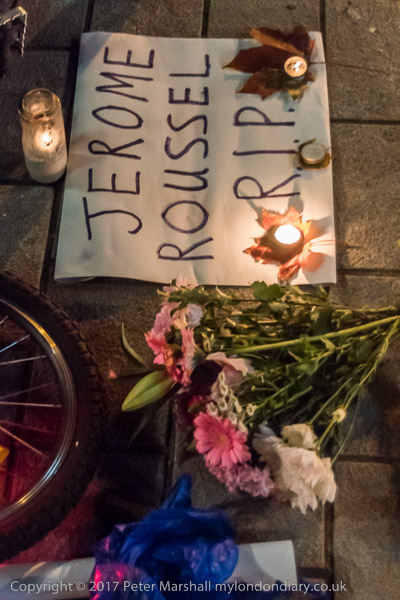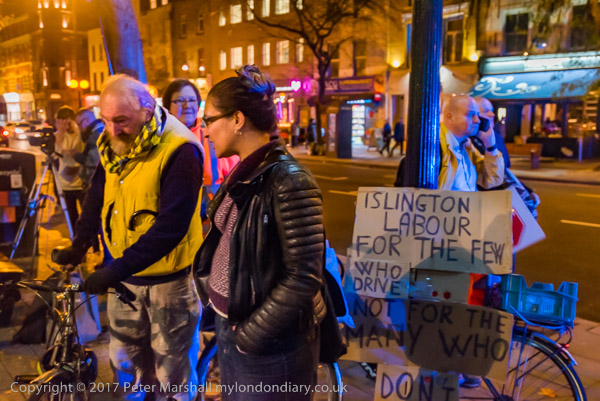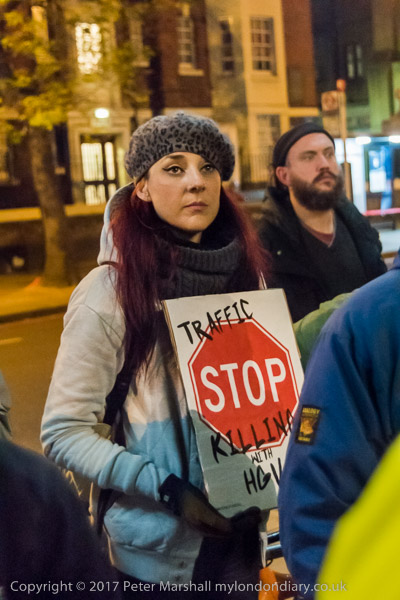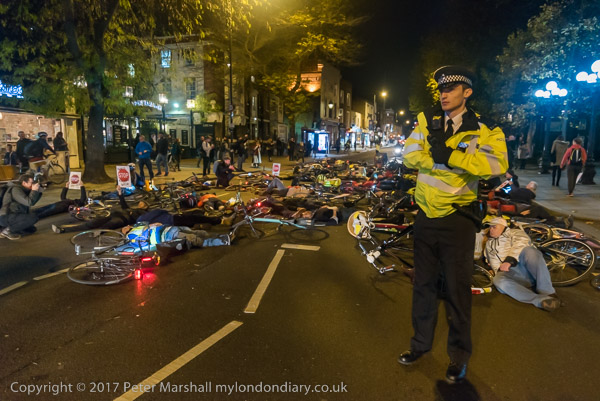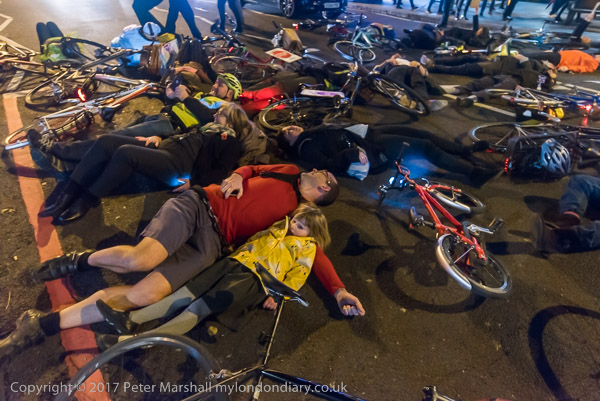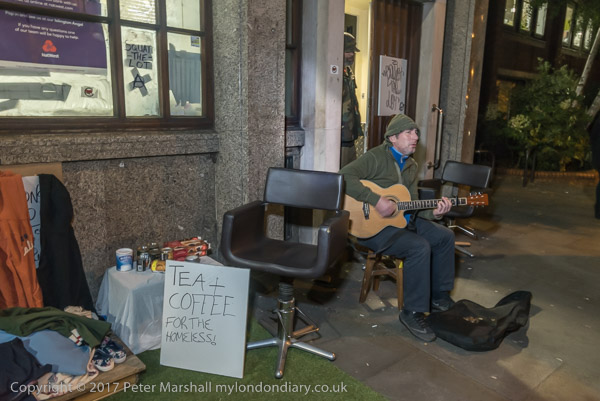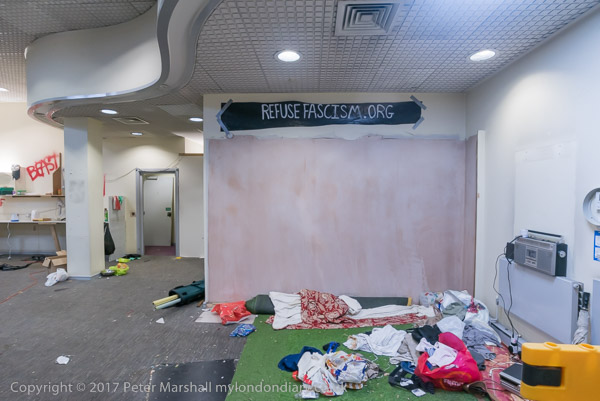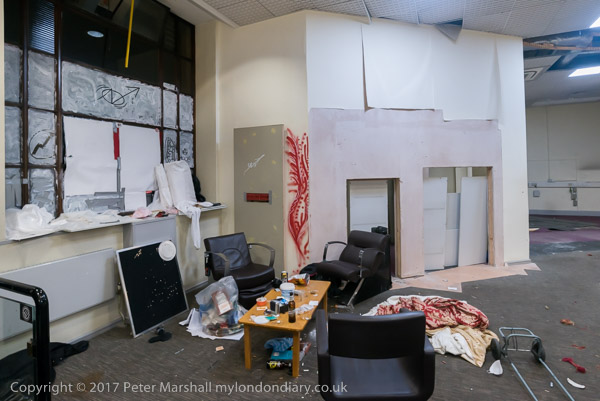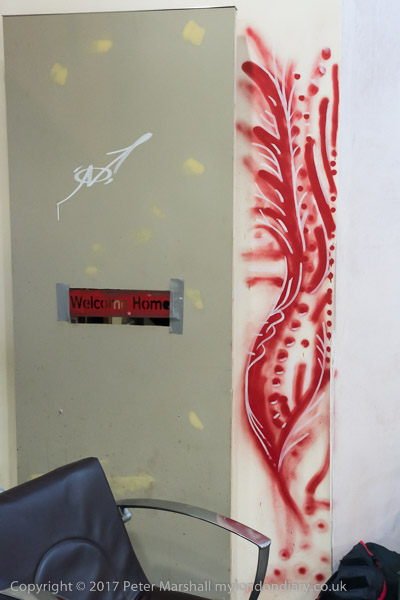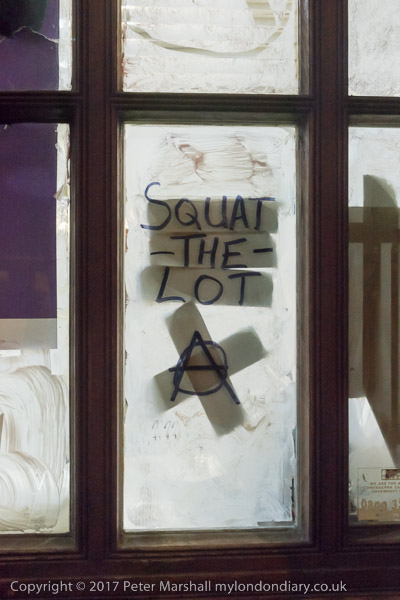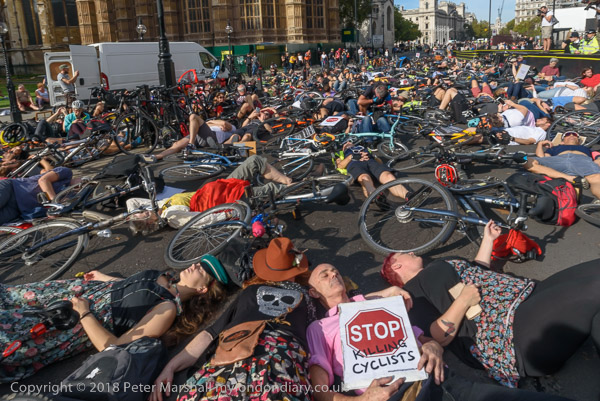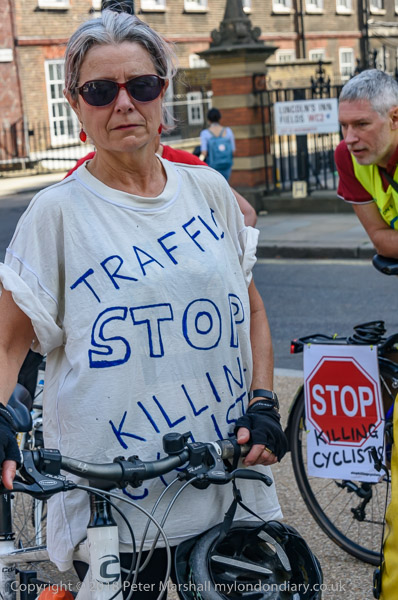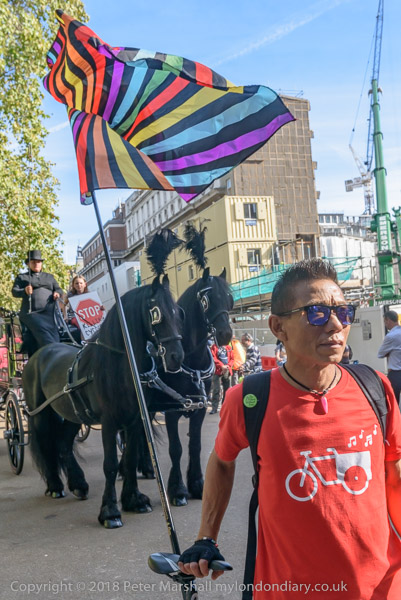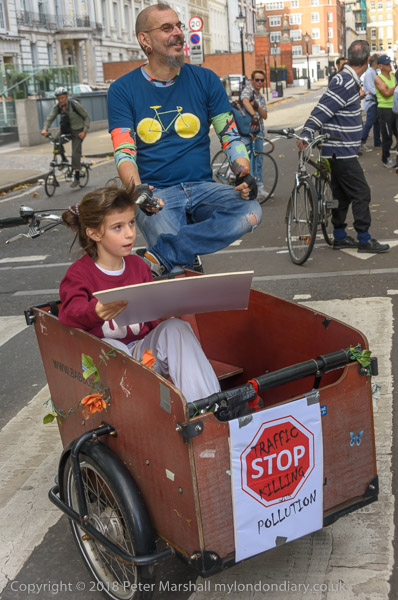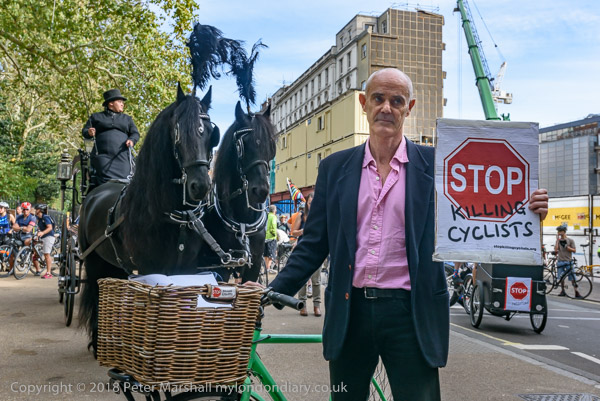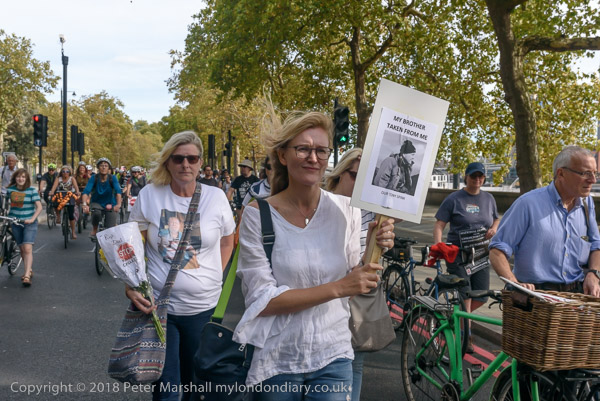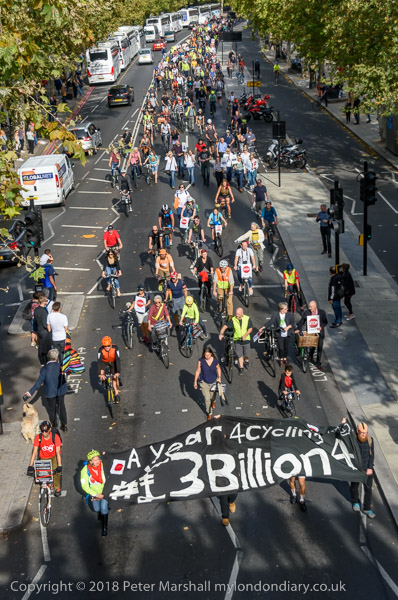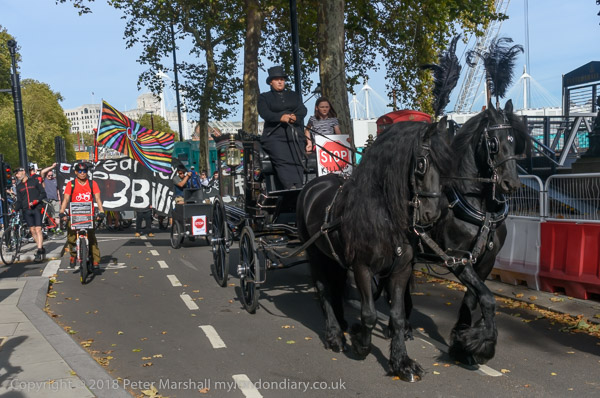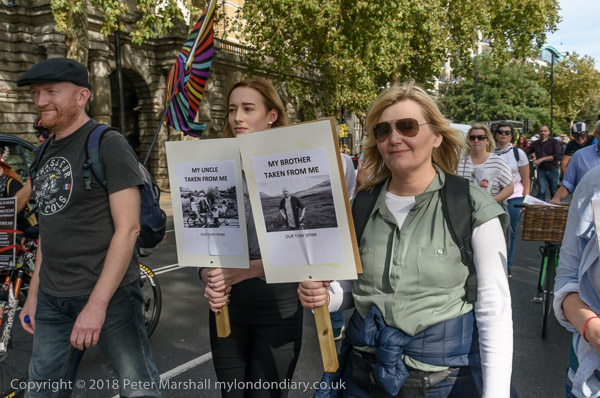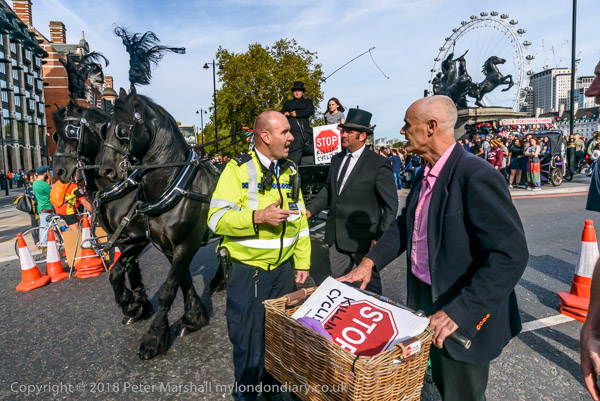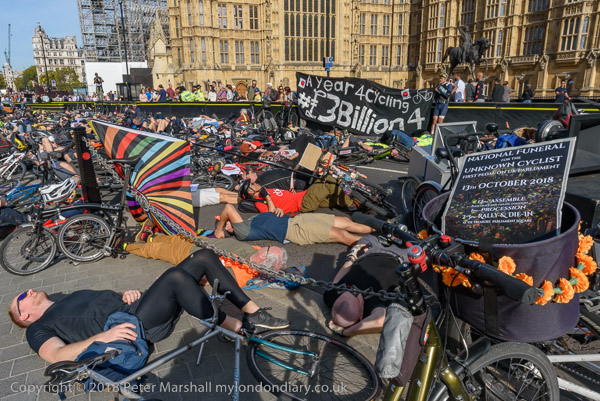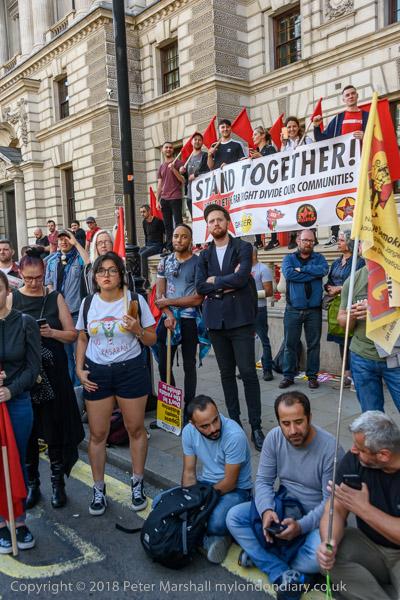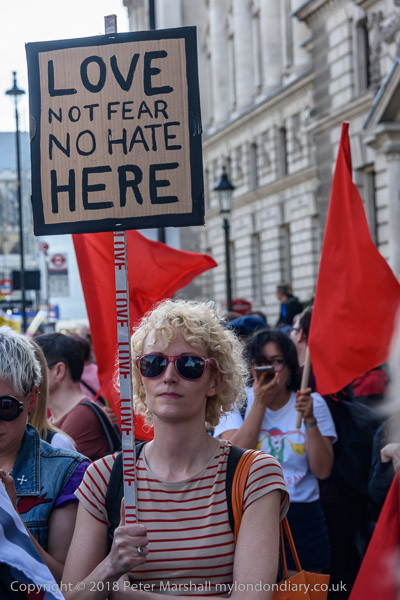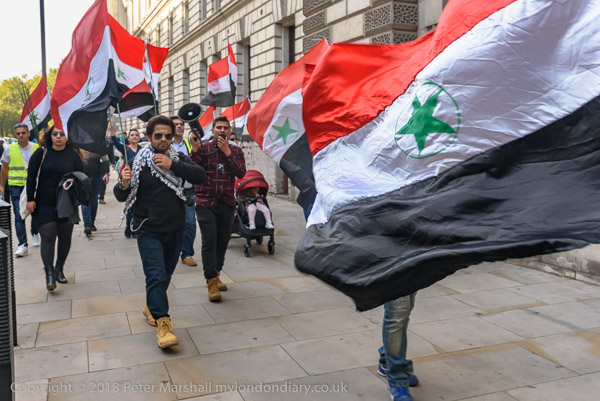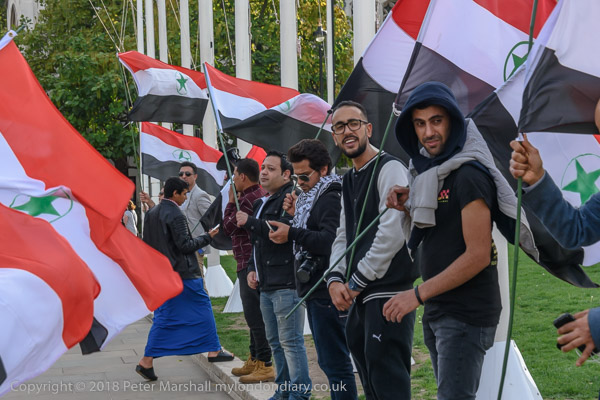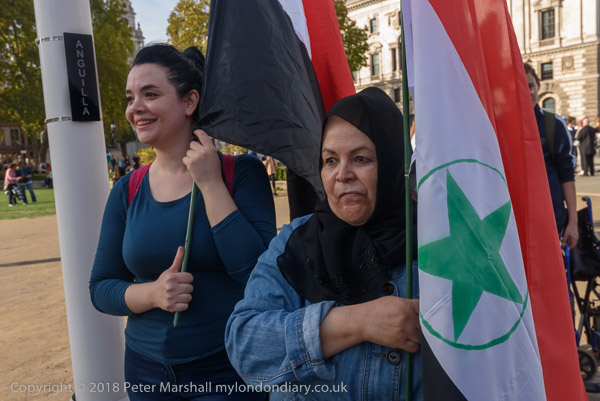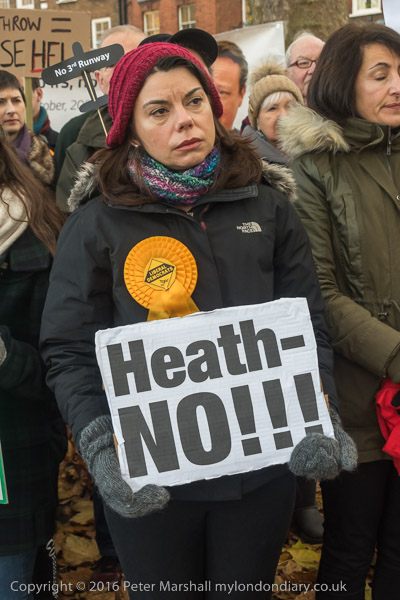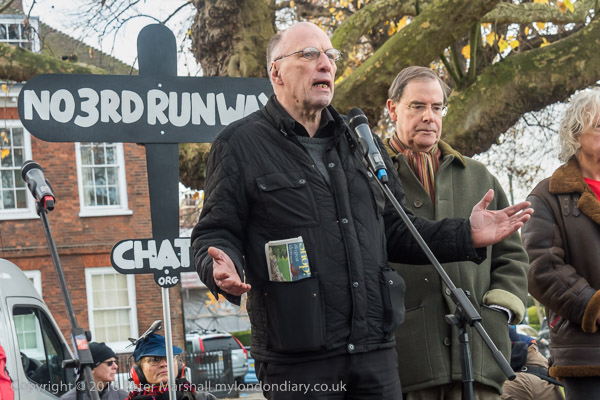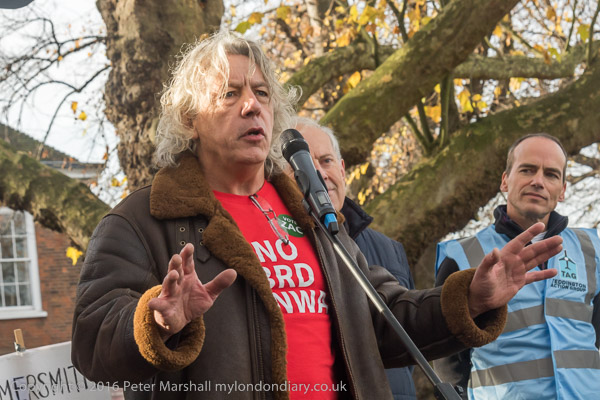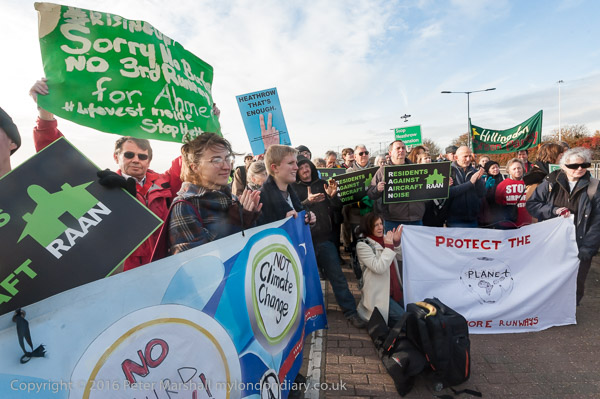Occupy Gandhi – stop fossil fuel criminals: Monday 4th May 2015 was the third day of Occupy Democracy’s 10 day ‘Festival of Democracy‘ in Parliament Square “building a movement for real democracy: free from corporate control, working for people and planet!“
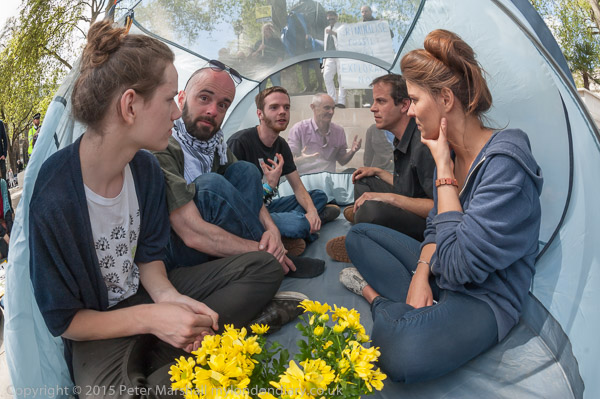
I arrived in time for the meditation in front of the statue of Gandhi, noted for his direct action civil disobedience, which called for fossil fuel exploration and investment to be made a crime.
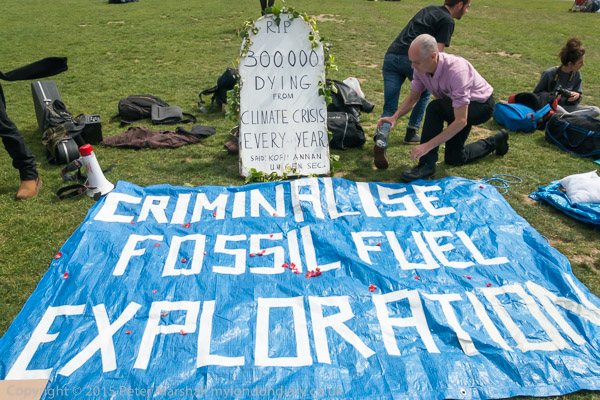
Blue tarpaulins had become a symbol of protest by the Occupy movement worldwide, and particularly in Parliament Square where the Police Reform and Social Responsibility Act 2011 had allowed police to seize tents and anything else “adapted, (solely or mainly) for the purpose of facilitating sleeping or staying in a place for any period” and there had been many battles between police and protesters over the seizing of blue tarps.
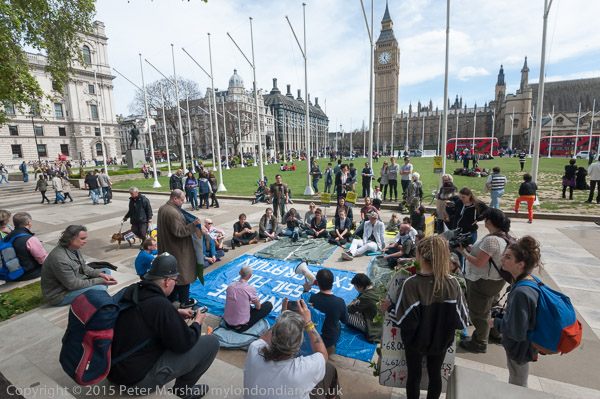
Donnachadh McCarthy spoke at the start of the rally and tarps were put into placeon the paved area in front of the statue of Gandhi. Occupy protesters then sat on them in a circle with others standing around and watching.
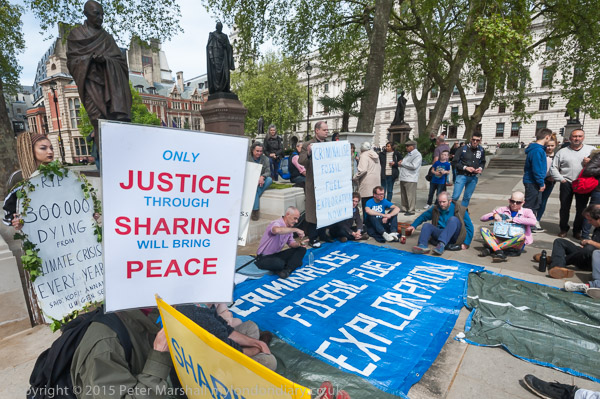
At the centre of the circle was a blue tarp with the message ‘CRIMINALISE FOSSIL FUEL EXPLORATION’ and there were some short speeches and a time for meditations, during one of which Donnachadh and another person leading the event got up and wrapped a blue tarpaulin around Gandhi.
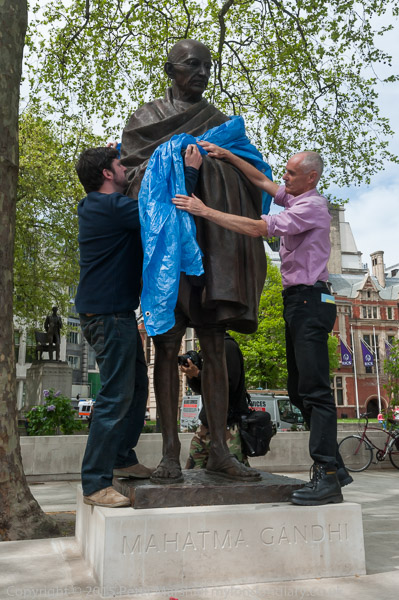
Heritage wardens came and asked for the tarp to be removed, but were ignored and they then removed it themselves.
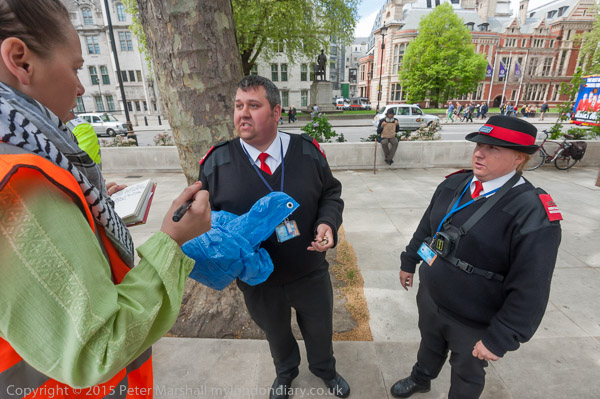
Two protesters than brought up a another tarp, putting it around Gandhi but taking care – at least until the wardens moved a little away – not to letting it actually touch the statue.


At the end of the meditation, Donnachadh announced an act of civil disobedience and pulled a folding tent onto the tarpaulin on the pavement in front of him and erected it. Several people then came and sat inside it, and the protest continued around the tent with Donnachadh joining the others inside.
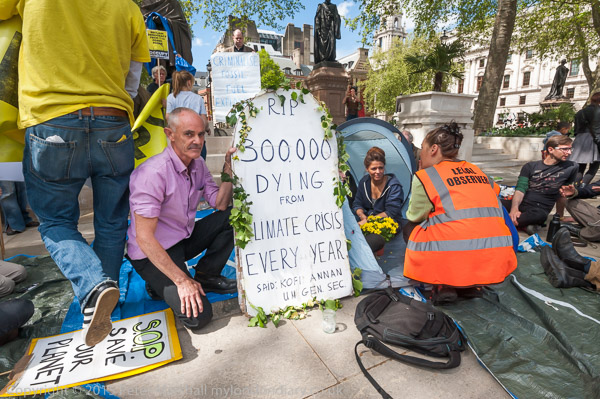
Heritage wardens talked with police and after around half an hour a few police officers came to tell those in the tent they were committing an offence and might be arrested if they failed to leave. The police then walked away.

The protest continued and twelve minutes later as Big Ben was striking for 2pm a group of around 20 police marched in and surrounded the tent. Donnachadh had been standing in front of it but quickly jumped back in as they arrived.
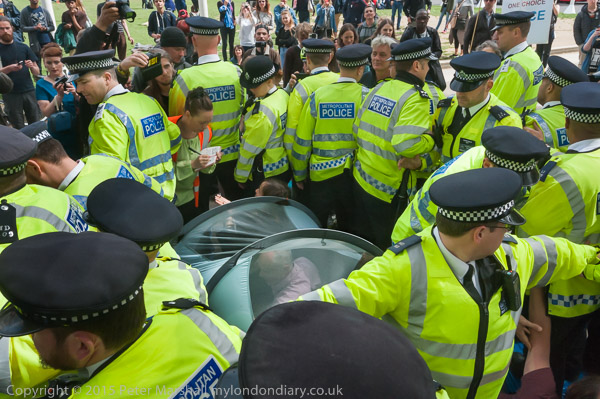
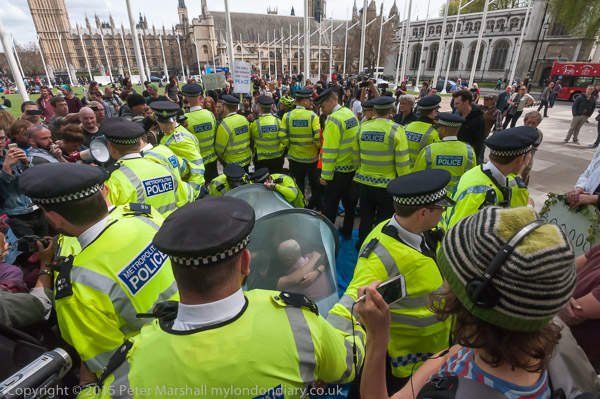
Those inside the tent were told they would be arrested unless they left immediately. With officers surrounding the tent it was had to see or photograph what was happening, but only three remained.

Police then went inside the tent where the protesters had linked arms around each other and slowly managed to drag them out, one by one.

When Donnachadh was dragged out and carried away to a police van he was still shouting against fossil fuels. After the police had pulled out the final protester and the torn and broken remains of the tent the protest continued around the statue of Gandhi, but many including myself soon left.
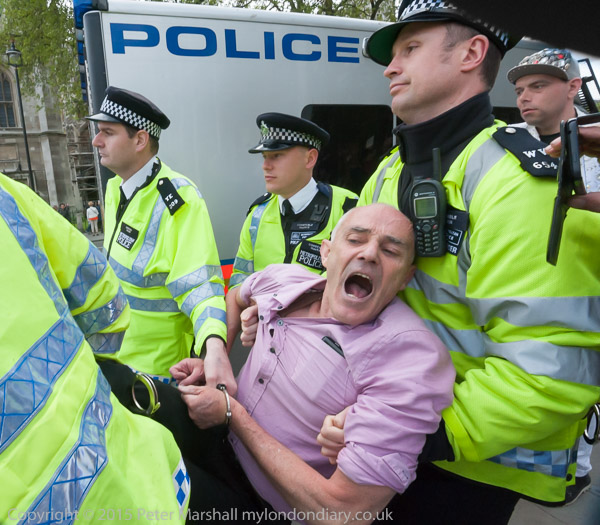
Many more pictures, particularly of the final scened when police surrounded the tent and dragged Donnachadh away on My London Diary at Occupy Gandhi – stop fossil fuel criminals.
Flickr – Facebook – My London Diary – Hull Photos – Lea Valley – Paris
London’s Industrial Heritage – London Photos
All photographs on this page are copyright © Peter Marshall.
Contact me to buy prints or licence to reproduce.
